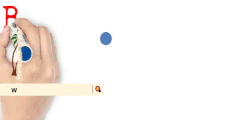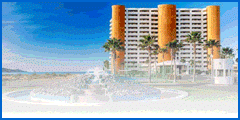FINAL RESULTS OF POPULATION AND HOUSING CENSUS 2010 DATA SONORA
Resultados Definitivos Censo de Población y Vivienda 2010 datos de Sonora
The National Institute of Statistics and Geography (INEGI) announced the final results of Population and Housing Census 2010 with data on demographic, social and economic basic population and housing. Below is information on the demographic, cultural, economic and housing, which shows the reality of the state of Sonora to the date of lifting of Population and Housing Census 2010 and accounted for 2,662,480 people, of which 1,322,868 are women and 1,339,612 men.
Demographic Characteristics
- Stresses that the age structure of population has become evident and demographic changes over time. The 2010 Census population pyramid is broadened in the middle and the base is reduced, the proportion of children has decreased, but the adults increases.
Education
- The census shows that 96.2 percent of the population aged 6 to 14 years attend school, which compares with 91.5 percent attending school in 1990, ranking fourth national coverage.
- The population aged 15 to 24 years attending school increased by 13.3 percentage points in the last 20 years. In 1990, 32.5 percent attended school in 2010, 45.8 percent of people in this age attend some school. At the same time, the proportion remains very similar between men and women. Today 46.1 percent of women and 45.4 percent of men go to school.
- The rate of illiteracy among the population 15 years and over decreased2.6 percentage points between 1990 and 2010. In 1990, 5.6 percent ofpeople aged 15 and over could neither read nor write and in 2010 was reduced to 3.0 percent.
- Statewide, the average schooling of the population aged 15 and above rose from 7.4 years in 1990 to 9.4 years in 2010, ie now have completedbasic education, ranking fourth nationally.
Health
- Between 2000 and 2010, the percentage of people who claimed to beentitled increased from 56.4 percent to 74.0 percent.
Disabilities
- The questionnaire-based census identified 145 672 expandedSonora with physical or mental difficulty to perform daily living activities,representing 5.5 percent of the total population.
Marital Status
- In the period 1990 to 2010 the married population hasdecreased, going from 43.4 percent to 38.1 percent in this period, thepercentage of single also decreased, going from 41.3 percent in 1990 to 34.6 percent in 2010. The population in union, which almost doubled, increasing from 8.9 percent to 16.4 percent in the same period.
Native language
- In Sonora live 61 270 people 3 years and older who spoke an indigenous language, this number means 2.5 percent of thepopulation in this age group.
Religion
- 2010, which declared Catholics represent 83.1 percent of the population 5years and older, or evangelical Protestants, 7.8 percent, other religions 2.1 percent and 6.4 percent reported having no religion.
Occupation and Employment
- The economic participation rate of the population 12 years and overCensus 2000 compared with 2010, reveals that labor supply increasedfrom 50.7 to 54.5 percent.
- In 2010, 59.6 percent of the employed population was in the trade and services sector, 27.3 in industry and construction and 12.1 percent in the agricultural sector. The percentages in 2000 were 52.4, 29.5, and 15.7 respectively.
Housing
- The overall housing stock is 905 368 private homes. Most of it is inhabited, ie 712 108 households, representing 78.7% per cent of the total, whereas140 219 houses are vacant, ie 15.5 percent and the remaining 53 041,representing 5.9 percent are used temporarily.
- During the past 20 years, the average number of occupants per householdshows a gradual decline, which means that an average of 4.7 occupantspassed in 1990 to 3.7 in 2010.
- In 2010, 5.3 percent of the state houses have dirt floors, which compareswith 17.5 percent of households in 1990 had this feature.
- The electricity service in the occupied private dwellings has a coverage of97.9 percent.
- The percentage of occupied private dwellings that have piped water in2010 is 96.5 percent.
- Private homes that have drainage is 89.8percent.
Assets in Private Dwellings
- The 95.6 percent of homes have television, refrigerator and cell phone are available in 92.2 and 80.4 percent respectively. The radio has 78 percent.The percentage who reported washing machine is 73.1 percent, 63percent of car or truck, fixed telephone line, 42.7 percent and computer and Internet is 38 percent and 29 percent, respectively.
















